Review for Journey To Agartha: Collectors Edition [Blu-Ray/DVD]
Introduction
Why do distributors do this? Why do they change the names of the movies they release in different territories? In Japan, Makoto Shinkai’s latest work is called Hoshi o Ou Kodomo, which apparently translates to Children Who Chase Stars. For its Western cinema release, it was re-titled Children Who Chase Lost Voices From Deep Below, which while not an exact translation is certainly poetic. The problem with that is that it challenges Twitter’s word limit, which given how these things are promoted these days is a handicap. For its home video release in the US, it was shortened to Children Who Chase Lost Voices, which still retains that poetic tone. It’s the same in Australia too. But for Europe, where Kazé are distributing, it’s been renamed yet again to Journey to Agartha. Nothing too poetic or melancholy there, just a bald description of the plot in three words. My mind working the way that it does, I’ve taken to calling the film Murder on the Orient Express... Sure, as a sop to the UK audience who complained about it on the social networking sites, Kazé have retained the Children Who Chase Lost Voices as a subtitle, in teeny tiny writing, but the damage has been done. Let’s see what more damage they can do as I review the Collector’s Edition of Journey to Agartha.
I never would have thought to see a Makoto Shinkai film on Blu-ray however, given the constant delays and ultimate lockdown that resulted in 5 Centimeters Per Second getting only a DVD release in the UK. But slowly the restrictions have been easing, and the latter film has even had a Blu-ray release outside of its native Japan, while The Place Promised in Our Early Days and Voices of a Distant Star have gone HD in Japan as well. It’s no wonder they are so eagerly anticipated by fans, as Makoto Shinkai’s films truly have the eye-candy worthy of such presentation. His films are wonder of nostalgic artwork, breathtaking colours and detail, and can move the viewer through atmospheric visuals alone. That’s before you get to his talent for melancholic emotional narrative, purely evocative films that are designed to satisfy the soul more than the intellect. When it was announced that Journey to Agartha was his first film to get a Blu-ray release in English speaking territories, you can bet that fans were rubbing their hands with glee.
On the day of release, you can get the film on single disc DVD, single disc Blu-ray, or a limited edition three-disc Blu-ray and DVD combo, which has a second DVD with the film’s extras, plus a commemorative booklet. I only received the check discs for review, and can’t comment on the booklet. Note that in the US, and in the forthcoming Australian release, the extras for the film are on the Blu-ray discs as standard, while the DVD releases are standard 2-disc releases. Only in the UK and Europe are the extra features limited to the collector’s edition.
Asuna is a young girl who spends a lot of time alone. She’s being raised by her mother who tends to be at work a lot, and it’s down to Asuna to amuse herself during the day. She’s got a secret base in the mountains, and she loves to play with a crystal radio, trying to pick up strange transmissions. When one day she picks up an unearthly song such as she has never heard, she sets forth in motion a series of events that will lead her on a fantastic adventure deep into the bowels of the Earth. It’s there that a strange starless world exists, where ominous and terrifying creatures prowl, and where a secret civilisation lies, one that holds many secrets, including the power to bring the dead back to life. These are secrets that those in the world above have killed to possess in the past, and will do the same even now, and Asuna isn’t the only one who ventures below.
Picture
Now this is what a whole lot of fans have been waiting for, Makoto Shinkai in HD, and Kazé’s Blu-ray disc offers the film in native 1080p widescreen at 1.78:1 aspect ratio. The image is gorgeous. It’s become a cliché to say that you can pause a film at any point, and hang that still on the wall as a piece of art, but for a Makoto Shinkai film, and indeed Journey to Agartha that is as appropriate a statement as any. As always his worlds are a wonder of light and shadow, atmospheric and involving, making the full use of visual effects techniques, and warm and involving animation to engage the viewer. The image on this disc is crystal clear and pristine throughout, and the character designs are engaging, if familiar in style, while the world designs are breathtaking and imaginative, bringing to life the neo-mythology of the early twentieth century. The only criticism I have is one fleeting, and inconsequential moment of banding, and that horses gallop strangely in the underworld.
The images in this review are sourced from the PR and aren’t necessarily representative of the final retail release.
Sound
This is a Kazé disc, front loaded with four language menus. Choose English and you’ll be presented with DTS-HD MA 5.1 Surround English and Japanese, with player forced English subtitles and a signs only track. In other menus, you’ll also find DTS-HD MA 5.1 French and Italian with French and Italian subtitles and signs, as well as a Dutch subtitle track. From what I sampled of the English dub, it seemed fairly run of the mill, but the Japanese audio was a lot better. Shinkai films tend to attract actors from other disciplines than pure voice work, and that seems to result in more measured and realistic performances. Certainly Journey to Agartha’s Japanese voice dub sounds of significantly high quality. The 5.1 audio works very well across the entire spectrum of the film, from strident action to moments of quiet reflection, without ever becoming overpowering.
The subtitles are locked on this Kazé disc, but once again Kazé are unable to display signs and dialogue at the same time. Fortunately, Journey to Agartha is a film made more for an international audience. There isn’t a lot of on screen text that needs subtitling. However if you are watching the Japanese and you need to know just what brand of rice Asuna lugs home, you’ll have to skip back and switch to the English audio to get the translation of the text on the sack. God help us all if Kazé one day licence Voices of a Distant Star, a story told through the medium of text messages and e-mail.
I also noted one typo, ‘naiveté’ was spelt ‘naivet?’
Extras
The lock slams down on this Blu-ray disc as it limits the user access as always. You have the choice of four language menus on disc insertion, but the only thing approaching extras on this disc come with the French menu, preloaded trailers for KZTV, Bleach the Movie 4: Hellverse, and Mardock Scramble: The Second Combustion. The end of the film is followed by a translated English language white on black text credit scroll. This is also true for the DVD disc.
The DVD movie disc in this collection, also available separately is even more locked than the Blu-ray, no pop-up menu to change audio during playback, and no access to the player timer. It’s preloaded with trailers for Bleach the Movie 4: Hellverse and Code Geass, but that is it.
The film on the DVD is presented in 1.78:1 anamorphic PAL widescreen, which looks pretty good on the small screen, with the odd moment of jerkiness, and some aliasing and shimmer on fine edges, as well as comparatively muted colours. You have the choice between DD 5.1 English and Japanese (no other languages here), again with player forced subtitles and signs, and the film gets the 4% speed-up with pitch corrected audio.
When you have to stick two more languages on a Blu-ray disc, I guess something has to give, and in this case it’s the extra features, which get shunted to a bonus DVD all to themselves here, only available in the collector’s edition, and all given NTSC-PAL conversions.
Actors’ Interviews Last 55 minutes, and the three main voice actors, as well as the director Makoto Shinkai talk about their characters and the story. It’s a pretty in depth piece that goes into quite some detail. Note that none of the on screen captions are translated or subtitled, so make a note of the names of the actors from the end credits scroll, or learn to read Japanese.
Also lacking caption translations is the Behind the Scenes of Agartha featurette, which lasts 45 minutes, although the first subtitle might fool you into thinking otherwise. This is a pretty detailed look at the making of the film, with interviews with the director and looks behind the scenes. You get everything from the inspiration behind the movie, the creative process, the voice actors, and the film’s soundtrack all the way to the premiere. It gets pretty technical pretty quickly but is worth sticking with.
The Journey of Makoto Shinkai lasts 8 minutes and is a whistle-stop tour of his filmography, giving a text background to the director, interspersed with trailers for She and Her Cat, Voices of a Distant Star, The Place Promised in Our Early Days, and 5 Centimeters Per Second.
Hello, Goodbye and Hello is the animated video for the film’s theme song, which as well as showing scenes from the film, also adds a little bit of prequel for each of the main characters that isn’t shown in the movie.
You also get the trailers for the film.
There is also a 32-page artbook, which I haven’t seen that is slipped in the box. Courtesy of an unboxing video, I can opine that it looks frightfully small in comparison to the box, and could easily have slipped inside a Blu-ray case.
As mentioned previously, Kazé have only included the extras as part of the collector’s edition, and on a bonus DVD. In the US release from Sentai, and it looks as if it will be true also for the forthcoming Madman release, the extra features are on the Blu-ray disc, and are presented in HD, obviously not possible in this release. What’s more, Sentai’s DVD and Blu-ray discs also contain the first Makoto Shinkai audio commentary to be aired in the West, something that Kazé have neglected from their release. Also, no locked subtitles.
Conclusion
Journey to Agartha is Makoto Shinkai’s most conventional movie to date, not least in the Ghibli-esque character designs and the more plot based narrative. It’s also his weakest film as a result, never quite matching the emotional resonance engendered by his earlier films. The Place Promised in Our Early Days actually did a better job of blending character, sentiment and story, but with Journey to Agartha, the balance tips more in the direction of the story, and this is a film that tries to pack in as many ideas and subplots as it can. As a result, not all of them are developed satisfactorily, and where in previous films plot weaknesses were redeemed by emotional weight, this doesn’t happen here.
The idea of a secret world existing beneath our feet isn’t a new one, and it’s one that has been explored in media many times over, from Jules Verne to all the various Amicus films starring Doug McClure. Shinkai’s take on the Agartha myth is a very visually compelling one, throwing in aspects of South American mythology as well, bringing to life a world, which on screen is breathtaking. There’s a lot to it, secret cities, hidden societies, strange materials and myths of the afterlife, as well as bizarre guardian beasts and terrifying wraiths. While in the surface world there is a secret society trying to find and take the secrets of Agartha, part of a long line of would-be conquerors who turned to the occult in the desire for even more power.
Against this complex and rich backdrop develops the stories of two characters, a young girl named Asuna, and a mysterious teacher named Morisaki. Asuna is a solitary girl who first hears an unearthly song on a kit radio, which leads her to meet and briefly befriend a strange boy named Shun. For tragic reasons, it’s a short-lived friendship that coincides with the appearance of a strange beast on the mountain. At the same time, she gets a new teacher in school named Morisaki who has several hidden agenda. Strongest of them all is a personal tragedy of his own, one that has him seeking Agartha and the legend that it can bring the dead back to life. Shun is the key to finding Agartha, and both Asuna and Morisaki wind up venturing underground into a fantastic world.
The film’s main weakness is in the emotional narrative, usually the strongest hook in a Shinkai film. Asuna is the main character in the film, it’s her journey that we follow, but it’s an unfocused and vague one. It’s like she’s an observer on this trip, rather than a participant, and her reasons for going to Agartha never really become clear, even to herself, at least not until the end, and that revelation is weak and unsatisfying to the viewer. Morisaki’s arc is far more emotionally relevant, he has a stronger motivation to make his journey, and he has a lot more to learn about himself in the process. It really should have been his film, but in a Ghibli-esque film with broad appeal, it’s the cute girls and mascot animals that need to take centre stage.
I’m beginning to get concerned that Shinkai is becoming something of a Shyamalan one trick pony, as once again his central theme is loss. To be fair, his earlier films always dwelt on love unrequited, separation, and melancholy for the road not taken. In Journey to Agartha he has his characters face a more literal and devastating loss, as he examines how they confront, and come to terms with death. The problem here is that Asuna is already acquainted with such loss, so the grieving process that she goes through is more natural and understandable. Once again it’s Morisaki who has the most problem dealing, and as a result it’s his arc which is more appealing.
Journey to Agartha also exhibits an odd childish naiveté, at least from this 21st Century British perspective. Maybe it does say more about the society we live in now, but I was scratching my head at the idea of a young school girl, who after just one lesson from a new, male teacher, gets influenced enough to find out his address, go knocking on his door to find out more, and then disappears for days with him on an adventure to a fantasy realm. You’d expect that kind of simple and innocent plot twist in a film aimed at much younger audiences, but there are moments of violence and gore in Journey to Agartha that preclude such audiences. I suppose the explanation is that the film is set in an earlier age, the 1970s, where the Hollow Earth theory was still prevalent, and children could befriend adults without alarm bells ringing. Still, the night vision goggles and laser range finders seem anachronistic.
Visually Journey to Agartha is breathtaking, and if you get the Blu-ray (believe me the DVD just doesn’t compare), you will sit in front of your television entranced for two hours. Makoto Shinkai makes incomparable eye-candy. It’s just that the story is weak, overburdened with plot, takes far too long to get going, and leaves a sight too many loose ends to really satisfy.
Kazé’s physical presentation can’t be faulted with this collector’s edition. You get 3 discs in a very agreeable card box, and a 32 page art-book, which admittedly could have been larger to fill that box. It’s just that once again their on-disc presentation lacks polish, and once more Kazé give us less than that which other English speaking regions receive. The subtitling could have been better, and there’s no need to lock it when the US disc is unlocked. If you just want to see the movie, then I would recommend the single disc releases. If however you are a Shinkai fan, and intent on collecting the best possible releases of his films, then the Sentai release looks far better if you can spin Region A, or otherwise just wait a couple of months more for the Region B Australian Madman release. You won’t get the art book, but those Blu-rays are unlocked when it comes to subtitles, have all the extras on board the disc and in high definition, as opposed to shunted to a low res DVD, and they also include a Makoto Shinkai commentary that this disc leaves out. Best of all, they aren’t called ‘Journey to Agartha’. Stupid name!
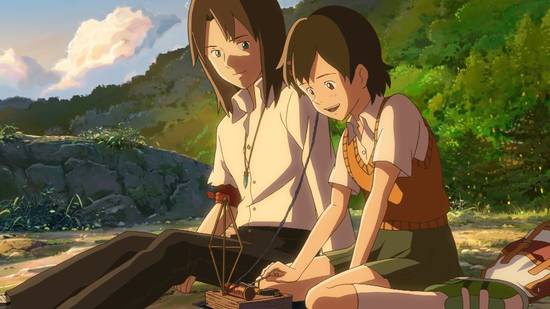
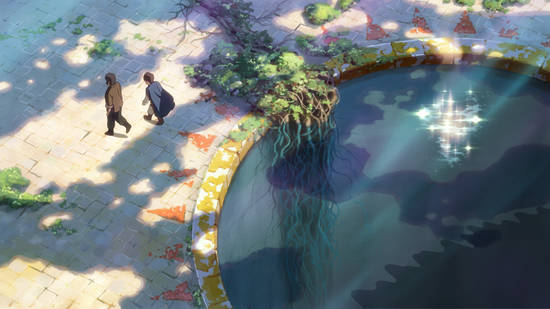

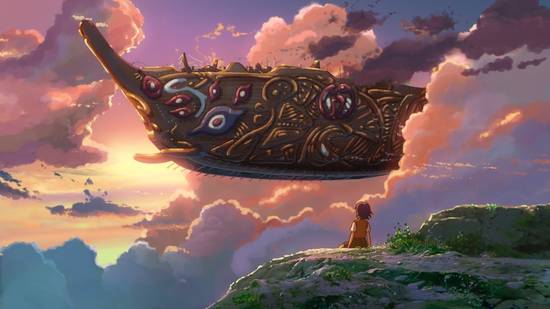
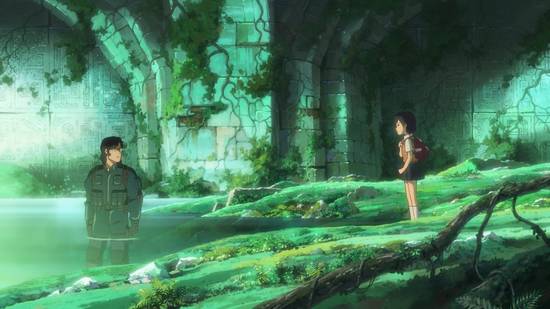
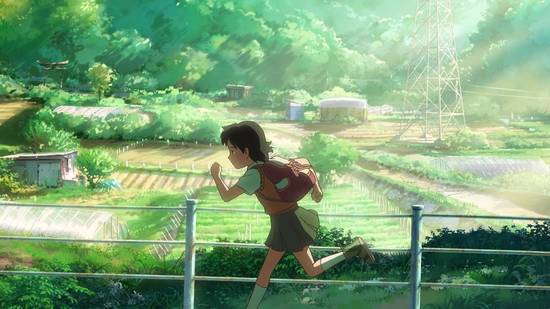


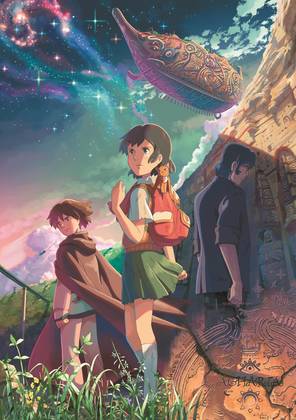
Your Opinions and Comments
Be the first to post a comment!